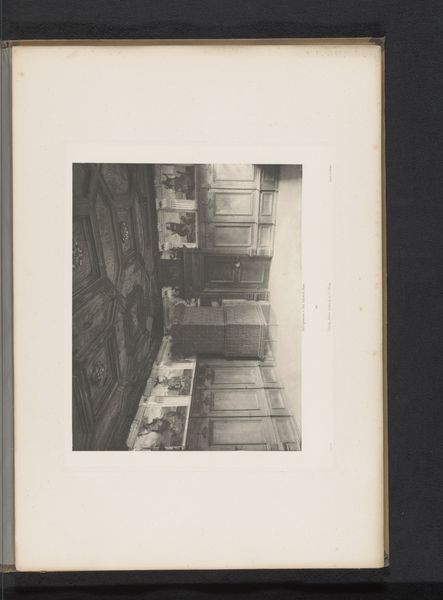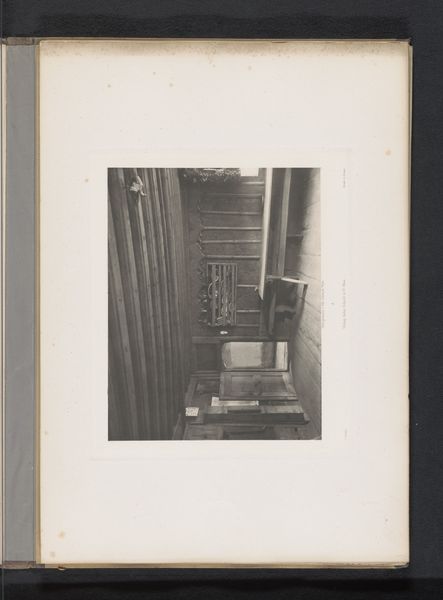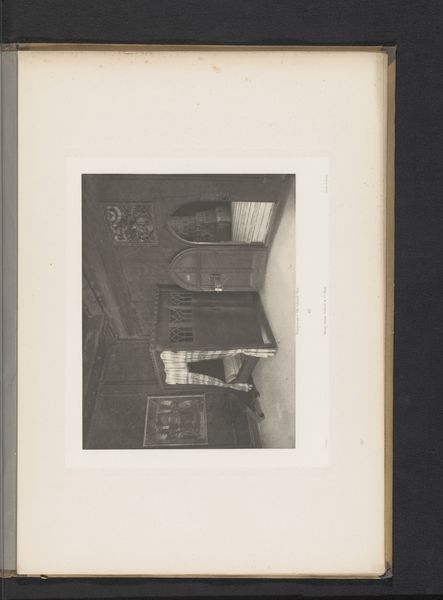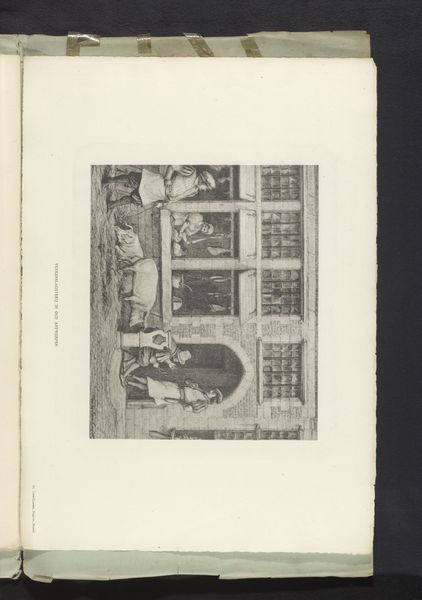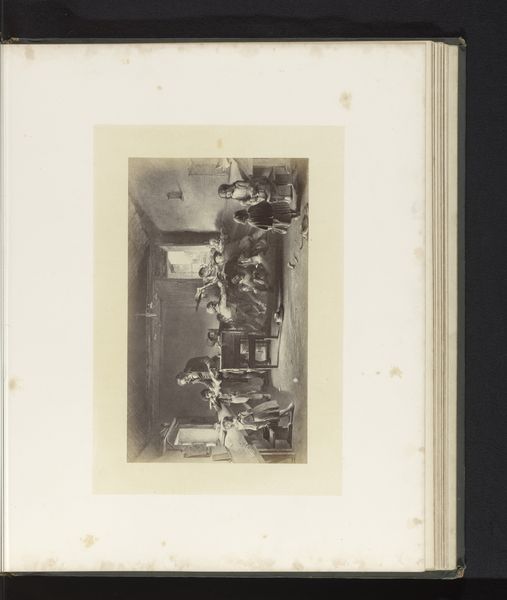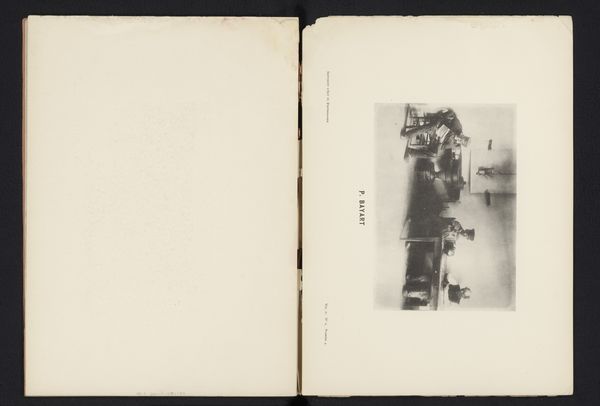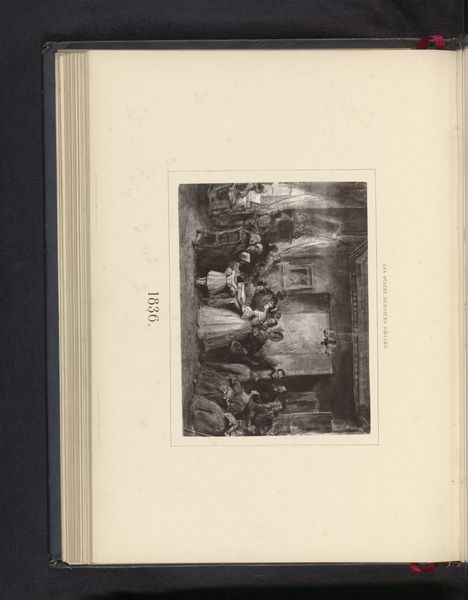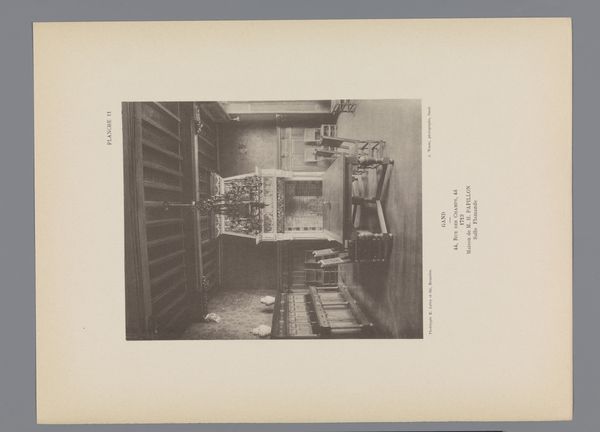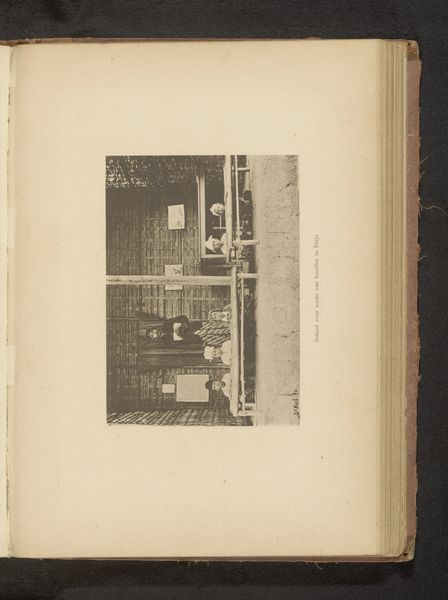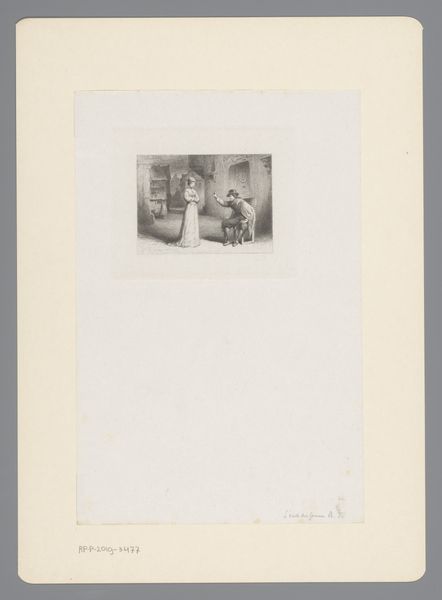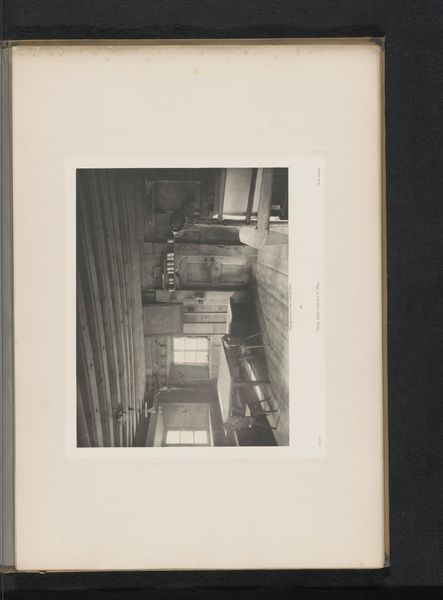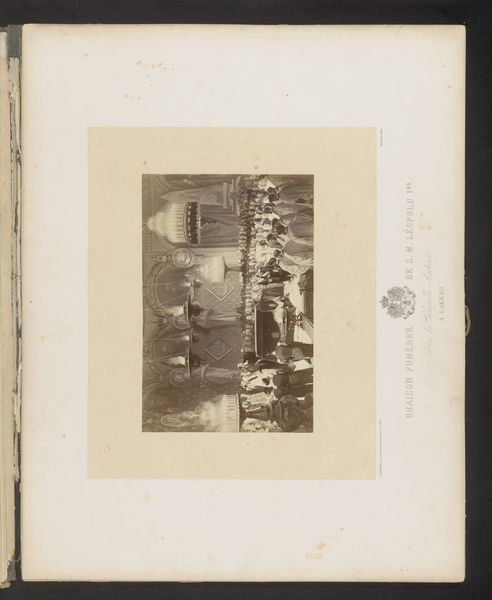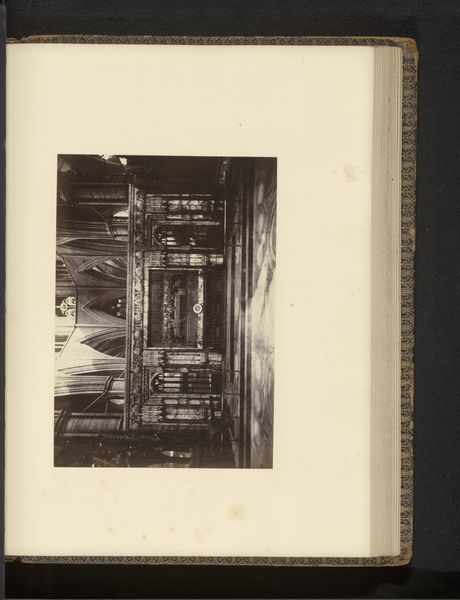
Dimensions: height 111 mm, width 160 mm
Copyright: Rijks Museum: Open Domain
Curator: Welcome. Let's discuss "Man komt binnen in een kamer waar een vrouw aan een tafel zit", which translates to "Man enters a room where a woman sits at a table" made before 1898. The work, by Léon Bovier, is a gelatin silver print. What strikes you first about it? Editor: It feels like an intimate and somewhat tense domestic scene, almost voyeuristic. The monochrome palette contributes to a feeling of a bygone era, a stillness, but also... constraint? Curator: Interesting observation. We can interpret Bovier’s composition as reflecting evolving social dynamics. Photography during this period played a crucial role in documenting and shaping perceptions of gender roles, capturing moments within the private sphere that speak to larger societal structures. The print’s production as a genre painting also reflects an engagement with representing scenes from everyday life for the wider public. Editor: The woman seems almost trapped, confined to her domestic duties, as the man strides in. What exactly is happening, and how does that inform its socio-political narrative, would you say? Curator: Considering photography’s evolving position during that time, it might serve not just as a static record but also as a subtle commentary. The lack of overt emotion is worth considering. Perhaps, that hints at the normalcy, the mundaneness of gendered expectations. Also the development of gelatine silver prints in this time created affordable imagery and widened consumption among social classes. Editor: Do you think that is enough to claim that the picture attempts a reflection on these dynamics and tensions? Shouldn’t there be at least some ambiguity, resistance even, on behalf of the figure subjected to patriarchal structure? I struggle to see that. Curator: Bovier may not be explicitly taking sides. It seems more intent on representing the atmosphere and documenting a social tableau, allowing the viewers to engage critically with their reality. Editor: Right. By just presenting and framing this image like that, he perhaps invites the viewer to contemplate the ingrained expectations of men and women in those domestic spaces. He provides, after all, this scene with minimal artistic overtures which would inevitably push the audience to ponder the implications themselves. Curator: Exactly. It captures the complex negotiations and implicit power dynamics in that period. Looking back from today’s viewpoint enables us to see shifts and ask essential questions. Editor: I agree, and it makes me consider the ongoing debates about representation and who gets to tell these stories, even today. Thanks for your expertise on the wider context and societal implications here. Curator: My pleasure. Considering photography in its wider production, as a documentary artifact makes these questions even more necessary and interesting.
Comments
No comments
Be the first to comment and join the conversation on the ultimate creative platform.
